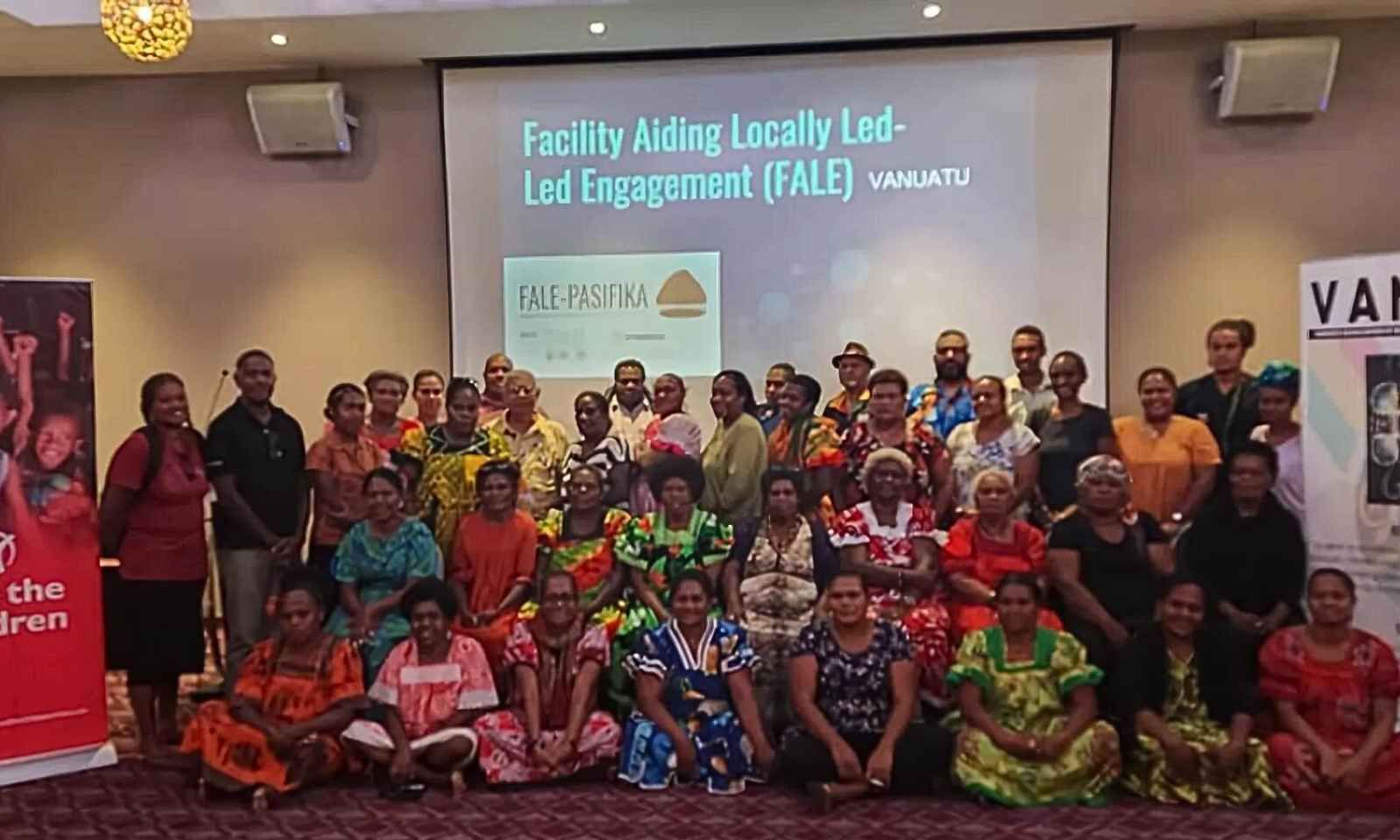

In October 2023, Micronesia was getting ready for a severe El Niño-induced drought. However, humanitarian aid from the European Union contributed €100,000 (NZ$184,000) to the preparedness efforts.
Photo/IFRC
Pacific groups struggle for funding amid growing global influence
Organisations in the Pacific are facing funding disparities as international agencies dominate despite the growing need for community-led humanitarian efforts.


Ōtautahi's 1 Drop Nation celebrates brotherhood and legacy in new music



Lineup for Miss Pacific almost complete after Fiji, PNG crown queens

Ōtautahi's 1 Drop Nation celebrates brotherhood and legacy in new music


The Pacific is the world’s most aid-reliant region as geopolitical competition for influence inflames record levels of development assistance in the realm.
Localisation is crucial when it comes to humanitarian development in the Pacific.
However, there are claims of a double standard in funding practices between the local groups and the larger government agencies.
With development finance more significant in these economies than any other part of the world, the executive director of the Pacific Islands Association of Non-Government Organisations (PIANGO), Emeline Siale Iloahia, says involving local organisations is crucial because it concerns their lives and their recovery.
Australia is the largest donor to the islands, providing about 40 per cent of the total development finance from 2008-2021.
Watch the Lowy Institute Pacific Aid Map on aid assistance in the region.
In that same period, the Lowy Institute Pacific Aid Map found that the Pacific received more than $40 billion in development assistance.
Despite the need to give opportunities to local organisations to help their communities, access to funds remains an issue.
“We have seen a lot more money being redirected to other things by either government or contracting agencies,” Iloahia says.
“And the same rule doesn't seem to apply. Year in, year out, we know in all of our countries in the Pacific that there have been some issues about how they manage resources in their public finance.
“But year in, year out donors still put in money to those government agencies. Why is it a double standard? Why is it that we don't apply the same rules when it comes to civil society and community-based organisations and local actors?”
Established in 1991, PIANGO supports Pacific NGOs by amplifying their concerns, fostering collaboration with development partners, and promoting sustainable development.

PIANGO executive director Emeline Siale Iloahia (left) and Beth Eggleston, Humanitarian Advisory Group co-founder. Photo/Ala Vailala
Twenty years later, the United States Agency for International Development (USAID) opened its first office in Papua New Guinea.
USAID now serves 12 Pacific island nations, focusing on initiatives such as climate change mitigation, disaster recovery, and health care.
Its senior development counsellor, Blake Chrystal, understands how compliance requirements pose challenges for smaller local organisations.
He reaffirms that international organisations like USAID are working to simplify these procedures.
“We’re getting some boots on the ground as we say. We’re starting to expand our footprints because historically, our programs in the Pacific comparatively speaking, some of the other regions haven’t been quite on scale.
“We’re starting to see that and we’re starting to launch new programs. It's an exciting time in the Pacific.

USAID Senior Development Counsellor, Blake Chrystal. Photo/ US Embassy Botswana
“There are a lot of administrative compliance requirements when you accept money from a donor.
“Looking at local organisations and their ability to meet those compliance requirements, if you're a small organisation of one or two people, you might be doing great work, but you probably don't have an HR department.
“Is what we want for these small organisations to have 80% of their staff working in administration? No, we want them focusing on getting out in the communities and doing the work that's so important.”
Iloahia says localisation is not new but a continuation of the Pacific tradition of self-reliance and indigenous knowledge. She used a successful local initiative, FALE Pasifika, as an example.
FALE, which stands for Facility Aiding Locally Led Engagement, initiated a local-led response following the Hunga Tonga Hunga Ha’apai volcanic eruption in January 2022.
“They supported women who had been relocated to church halls, and they were not comfortable sharing their stories with the psychosocial programmes because they need some kind of normalcy in there.
“So they introduced weaving, cash for weaving, and once they started getting into their normal practices, then they started sharing their stories.”

FALE Vanuatu general meeting held in Port Vila earlier this year. Photo/ PIANGO Pacific 2030
On the geopolitics in the region, Iloahia says the Pacific has seen bigger powers taking leaders outside of the region to make decisions.
“Our leaders were hosted in Japan for something and then the next thing you know that they all say that treated water that has been dispersed to our ocean is fine.
“Those are the geopolitical observations that you don't necessarily have to be a political science expert because you can still observe something around power and that power is associated most of the time with funding.
“So those are the underlying dynamics of the power challenges that we are faced with, with geopolitics. Very much the same kind of thinking when it comes to localization.
“Where do you see the power when it comes to the local people making decisions about their own development and about their own responses when the funding is displaced elsewhere? And the people that are making those decisions for that funding are not with us.”
As the Pacific faces increasingly environmental, social, and geopolitical challenges, the need for effective, community-led solutions has never been greater.
Both Iloahia and Chrystal agree that fostering genuine partnerships, where local knowledge and leadership are at the forefront, is the best way to ensure development efforts in the Pacific are effective and rooted in the communities they aim to serve.
Listen to Iloahia's full interview here